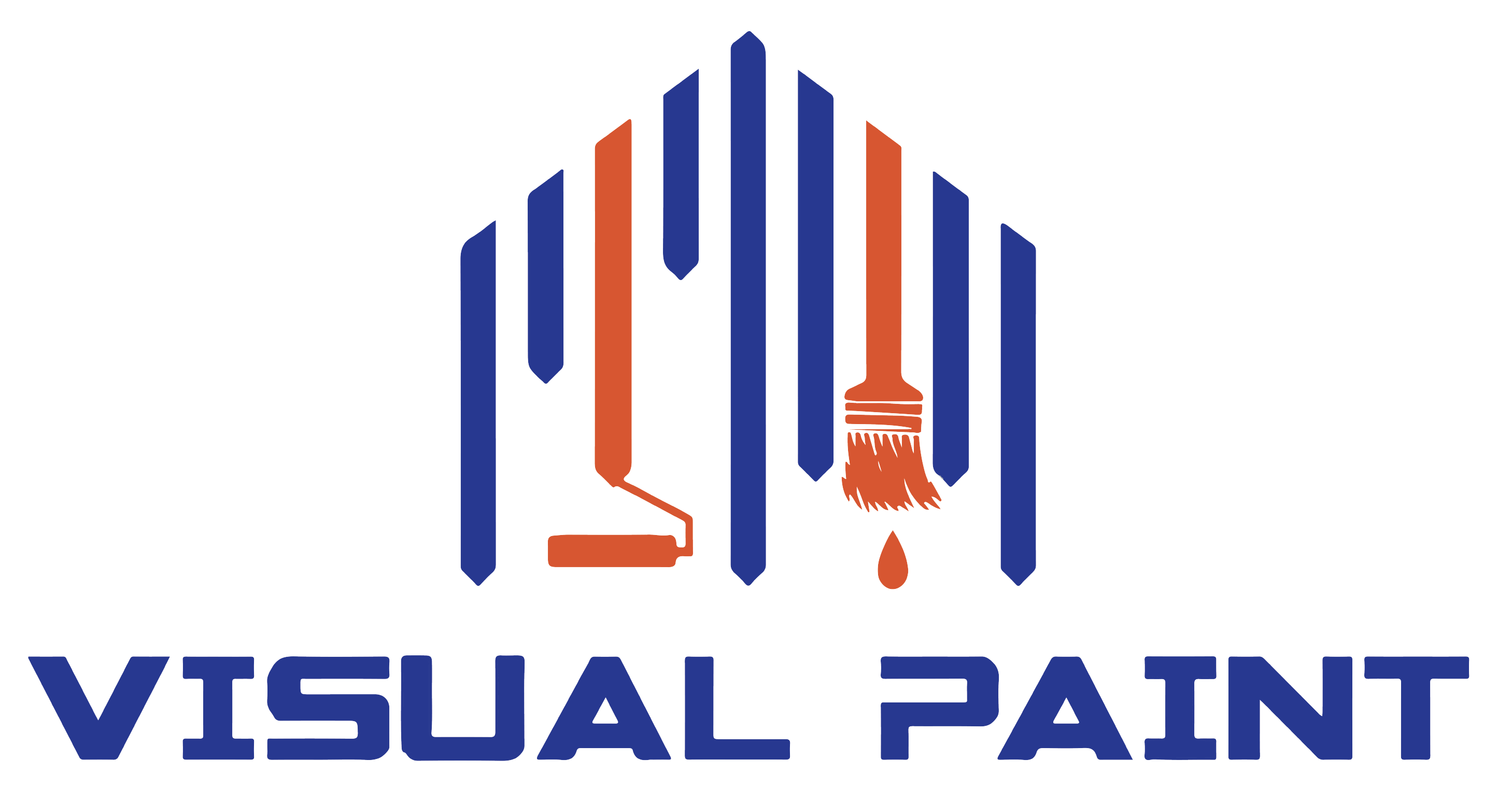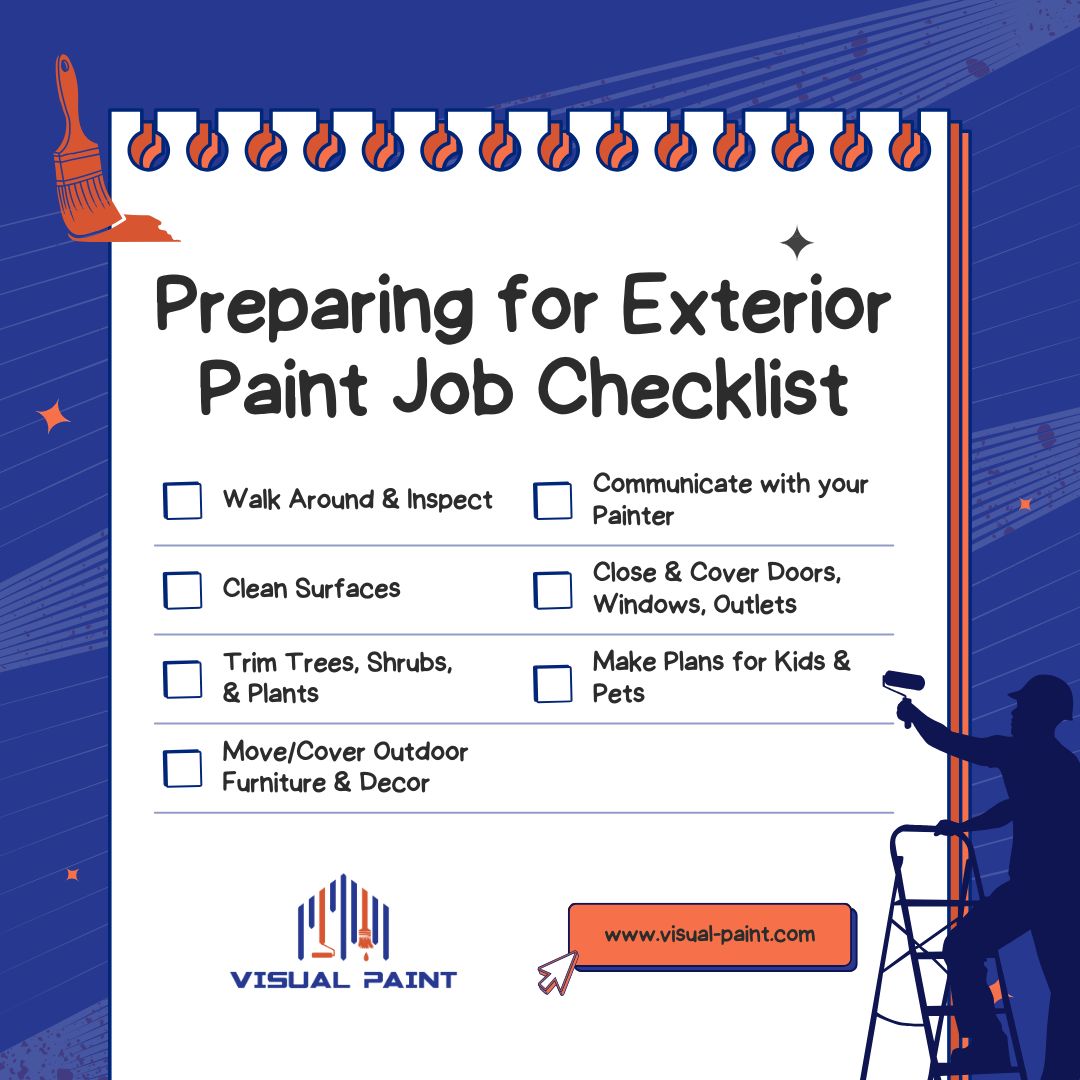How to Prepare Your Home for an Exterior Paint Job: A Homeowner’s Checklist

A fresh coat of paint can do wonders for your home’s curb appeal—but a successful exterior paint job starts before the first drop of paint hits your siding. Taking a little time to prepare your home helps the painters work more efficiently, prevents delays, and ensures the finish lasts as long as it should.
At Visual Paint, we want your project to go smoothly from start to finish. While we handle the prep on our end, there are a few simple things homeowners can do to make sure their home is truly ready for paint. Here’s a step-by-step checklist to guide you through it.
1. Walk Around Your Home and Inspect
Before any painting begins, take a few minutes to do a walk-around inspection of your home’s exterior. Look for any obvious damage—like cracked siding, peeling wood, or loose trim. Pay close attention to areas where water tends to collect, like near gutters or the base of your siding.
If you notice anything that looks like it might need repair, make a note of it. Small issues can be patched or replaced before painting starts, which will help the paint last longer and look better.
Not sure what counts as a problem area? No worries—Visual Paint can point these things out during your quote or prep walk-through.
2. Clean the Surfaces
Clean siding means better paint adhesion—and that means a longer-lasting, more even finish. Most exterior surfaces benefit from a good power wash before painting. This removes built-up dirt, mildew, pollen, cobwebs, and loose paint flakes.
You can either schedule a professional cleaning or ask if your painting company includes it as part of their prep (at Visual Paint, we often handle this step ourselves). Either way, be sure to allow enough time for everything to dry fully before painting begins.
If you’re cleaning your home yourself, be gentle—especially on older wood siding or delicate trim. Avoid high pressure on windows, vents, and light fixtures.
3. Trim Trees, Shrubs, and Plants
Overgrown bushes and tree branches can get in the way of painting crews and even cause paint to splatter where it shouldn’t. A few days before the project starts, take some time to trim back any landscaping that touches or hangs near your home’s exterior.
This gives the painters room to work and keeps your plants protected from accidental paint drips or foot traffic. For delicate flower beds or areas you want to keep extra safe, consider covering them with breathable fabric or plastic sheeting right before the painters arrive.
4. Move or Cover Outdoor Furniture and Decorations
Anything that’s near your home—grills, patio furniture, potted plants, garden tools—should be moved away from the work zone. Not only does this give painters a clear path to work, but it also keeps your belongings safe from paint splatter or dust from sanding.
If you have items that are too heavy or awkward to move, simply cover them with a tarp or some plastic sheeting. Even a fitted bed sheet can work in a pinch! The goal is just to give the painting crew a little space to move around freely and protect your stuff while they work.
5. Close and Cover Windows, Doors, and Outlets
Before painting begins, make sure all your windows and doors are closed tightly. This keeps dust and paint fumes from getting inside your home. If you have any window screens that are easily removable, you might want to take them down ahead of time to avoid any overspray or damage.
It’s also a good idea to cover outdoor electrical outlets, security cameras, light fixtures, and doorbells—especially if they’re located right on or near a surface that’s being painted. Painters typically mask these areas with tape and plastic before starting, but giving them a head start can make the process quicker and more precise.
6. Communicate with Your Painter
Don’t be afraid to share questions or concerns with your painter ahead of time. Good communication is key to a smooth project. If you have areas that need special attention (like a weathered side of the house or recent wood repairs), point them out before work begins.
You’ll also want to talk about logistics—like where the painters can park, where they should plug in equipment if needed, and whether there are any access points they should avoid. Let them know about pets, security alarms, or anything else they should be aware of while working on your home.
At Visual Paint, we welcome these conversations. The more we know up front, the better we can tailor the project to your home’s needs.
7. Make a Plan for Pets and Kids
Exterior painting involves ladders, tools, and sometimes strong-smelling materials. It’s safest to keep pets and children indoors or away from the work zone while painters are on-site.
If you have dogs that usually roam the backyard, plan to walk them or keep them in a separate part of the yard for the duration of the project. For cats and other indoor pets, it’s usually enough to keep the windows closed and give them a quiet space away from the noise.
Final Thoughts
Prepping your home for exterior painting might seem like a lot, but it doesn’t have to be stressful. A little planning on your part—paired with expert service from a professional crew—makes all the difference when it comes to getting results you’ll love.
And remember, you don’t have to figure it all out on your own. Visual Paint is here to help every step of the way, from prep to clean-up.
Ready to Boost Your Curb Appeal?
If you’re thinking about painting your home’s exterior, let’s make it easy. Reach out to Visual Paint today for a free quote and expert help preparing your home for a flawless finish. We’ll take care of the details—you enjoy the results.

